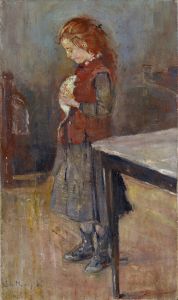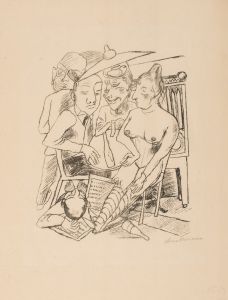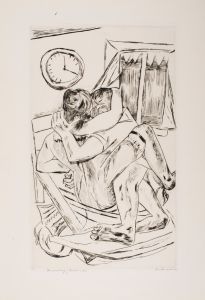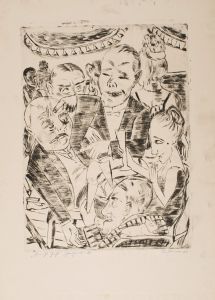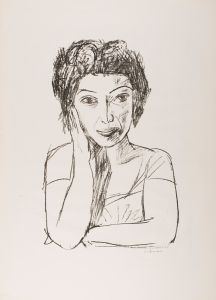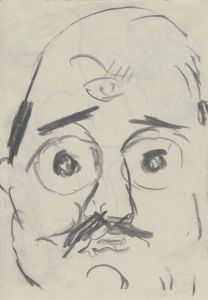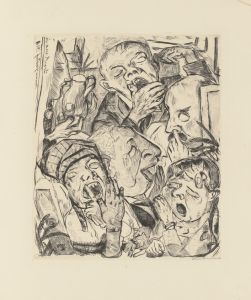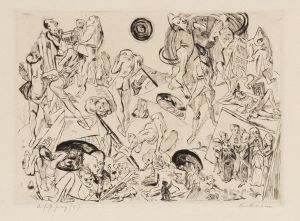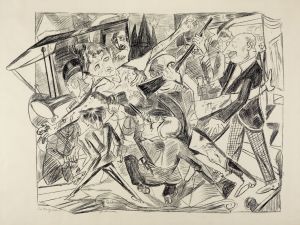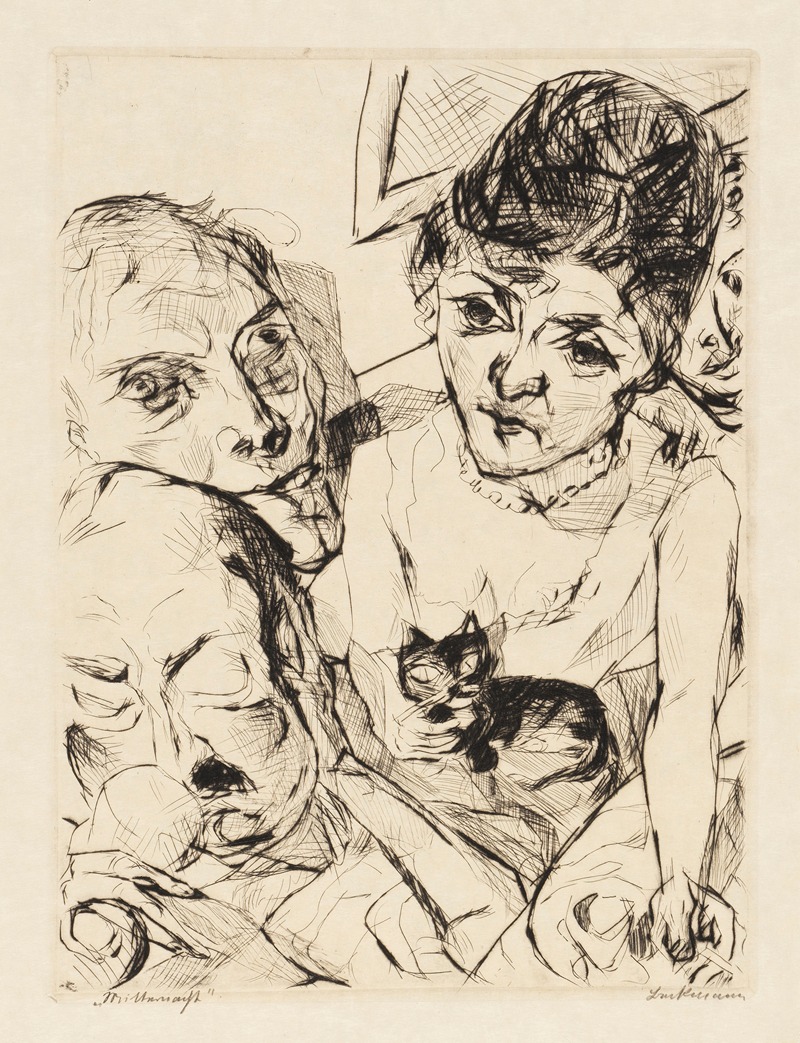
Gesichter Pl.12
A hand-painted replica of Max Beckmann’s masterpiece Gesichter Pl.12, meticulously crafted by professional artists to capture the true essence of the original. Each piece is created with museum-quality canvas and rare mineral pigments, carefully painted by experienced artists with delicate brushstrokes and rich, layered colors to perfectly recreate the texture of the original artwork. Unlike machine-printed reproductions, this hand-painted version brings the painting to life, infused with the artist’s emotions and skill in every stroke. Whether for personal collection or home decoration, it instantly elevates the artistic atmosphere of any space.
Max Beckmann was a prominent German painter and printmaker, known for his unique style that bridged German Expressionism and the New Objectivity movement. One of his notable works is "Gesichter Pl.12," which is part of a series of prints that Beckmann created during a tumultuous period in European history.
"Gesichter," which translates to "Faces" in English, is a series that Beckmann worked on in the early 20th century. This series is a reflection of his deep engagement with the human condition, exploring themes of identity, emotion, and the complexities of human relationships. Beckmann's work often delves into the psychological aspects of his subjects, and "Gesichter Pl.12" is no exception.
Max Beckmann was born in Leipzig, Germany, in 1884 and studied at the Weimar Academy of Art. His early work was influenced by Impressionism, but he soon developed a more personal style that incorporated elements of Expressionism. Beckmann's experiences during World War I, where he served as a medical orderly, profoundly impacted his artistic vision. The war's brutality and the subsequent social upheaval in Germany led him to explore darker themes and more complex compositions.
The "Gesichter" series was created during a period when Beckmann was transitioning from his earlier Expressionist style to the more structured and detailed approach of the New Objectivity movement. This movement was characterized by a focus on realism and a critical view of society, often highlighting the disillusionment and alienation felt in the post-war era.
"Gesichter Pl.12" exemplifies Beckmann's mastery of printmaking, a medium he frequently used to express his artistic ideas. The print showcases his ability to capture the essence of his subjects through bold lines and stark contrasts. Beckmann's use of chiaroscuro—an artistic technique that employs strong contrasts between light and dark—adds depth and intensity to the faces depicted in the print.
The faces in "Gesichter Pl.12" are rendered with a psychological intensity that is characteristic of Beckmann's work. Each face tells a story, inviting viewers to ponder the emotions and experiences of the individuals portrayed. Beckmann's interest in the human psyche is evident in the way he captures the subtle nuances of expression, suggesting a range of emotions from contemplation to despair.
Beckmann's work, including "Gesichter Pl.12," is often seen as a reflection of the turbulent times in which he lived. The interwar period in Germany was marked by political instability, economic hardship, and social change, all of which influenced Beckmann's artistic output. His work provides a window into the complexities of human existence during this era, offering insights into the struggles and resilience of individuals facing a rapidly changing world.
Max Beckmann's contributions to art extend beyond his technical skill and innovative style. His work challenges viewers to engage with the deeper questions of identity and existence, making him a pivotal figure in 20th-century art. "Gesichter Pl.12" is a testament to his enduring legacy, capturing the essence of the human experience with a profound and timeless resonance.





